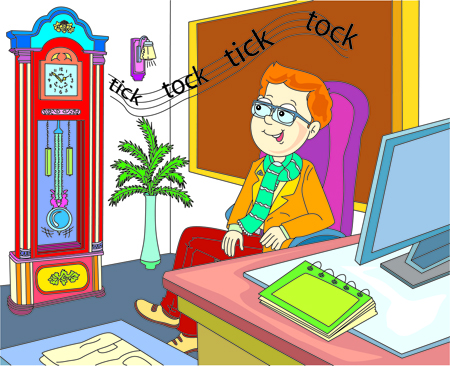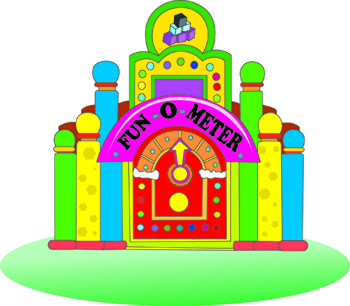The Ten Truths for Making Business Fun
And building a business that sustains you for years to come:
Business management: This is the third article in a monthly series on Making Business Fun: This article is about the 5 business management Truths
The last article laid out the foundations of a fun business and you can read it here
The articles are based on my book, The Ten Truths for Making Business Fun, published in 2011. All of my books and other resources are available for free here
Building a Fun Business: The five building blocks
And the hard hitting truths about business management

I won’t lie, you will need to focus on a few fundamentally dull things, small business management in other words, like goal setting, team management, planning, systems and measuring. However, I have a few shortcuts and strategies up my sleeve that make the process markedly more exciting…
A Fun Business Has Flexible Goals

Still, goal setting is surprisingly difficult to do well. It’s hard to get people onboard. It’s even tougher to keep everyone accountable. Our world is also changing every day, so goals must be continuously adjusted to suit new realities.
SMART is a well-established tool for creating impactful goals:
- S pecific
- M easurable
- A chievable
- R elevant
- T imeframed
I like the idea, but I believe that adding three more letters to the acronym makes it exponentially more powerful:
- S tretch (you can just see yourself reaching for it)
- I nspiring (for you)
- P ersonal (about your personal achievements and growth. Read: not about achieving a particular profit level or buying a Porsche because unfortunately, those material things won’t motivate your subconscious brain!).
I always invite my clients to decide on a large, visionary goal for the future (Jim Collins refers to this as the BHAG or “Big Hairy Audacious Goal” in his book, Built to Last) that meets the SMARTSIP criteria and then break it down into a medium-term goal and a goal for the year.
A Fun Business Engages Everyone

Most companies prefer not to think about the fact that a business IS its people, and your business only gets to make money if your people let you. Business Management and becoming a business leader is about people first and foremost.
If your employees are only interested in their paycheck, you will always struggle to make a dollar and business will feel anything but FUN. On the flip side, if your whole team is enthusiastically pulling in the same direction then your business will move mountains.
So, how can you achieve said nirvana?
- Hire the brightest: Find people whose attitude, energy, enthusiasm and resourcefulness matches your culture and team dynamics.
- Move beyond money: Listen to people, recognise their achievements and give them the right tools to do a meaningful job well.
- Get the team involved: Bring your people into all the processes, planning meetings and rhythms of the business.
- Remember that employees are people too: Don’t just dictate – get people involved in developing their own goals.
- Play the game of business: Get your people to start thinking like team members who are playing a game that they all enjoy and want to win.
A Fun Business Has a “Living” Business Plan That Drives It Forward

Having a written plan (AKA one that exists outside of your head) allows other people to engage with it and understand where the business is going. It allows you and others to check progress, brainstorm, make good decisions and maintain focus on the important stuff.
Most business owners know this. I’m sure you do too.
The sticking point comes from a simple misunderstanding. It comes from believing you are expected to develop an externally focused plan in the format we are taught by accountants, consultants and government bodies (read: not designed to be useful for you, the owner) when an internal business plan is what you need.
An internal business plan is a shareable and succinct “living” document. It is created collaboratively and revised frequently. It is designed to support decision-making and internal communication about the direction of the business.
Trust me, once you let go of your idea of what a business plan “should’” look like and just get around a table with a flip chart and a group of your people, you’ll find that business planning is not actually daunting at all, but instead really powerful and Fun.
A Fun Business Has Rhythm and Regularity

As a result, most business owners operate as crisis managers. This situation has many undesirable consequences: dropped balls, neglected business development, burnout, missed family time, stomach ulcers, or all of the above. An atmosphere of stress and last-minute problem-solving also starts to develop company-wide, leading to low morale and high employee turnover. You get stuck in a loop where you don’t have time to foster predictability, develop systems or train people to handle the crises themselves and because of this, there will always be another crisis.
The way through this dilemma? Building rhythm and regularity into your business.
One of the best first steps you can take is to start a weekly operations meeting where everyone reviews the previous week and plans for the next one (a better one). Want to make it effective? Start and finish on time. Follow an agreed agenda. Ensure everyone is present. Don’t allow distractions. Focus on solutions.
Next, you might decide to look at the systems in the business because systemisation is an important contributor to a sense of calm predictability. This could be as simple as creating a script and a standard form/checklist for inbound office calls.
Remember, people want to feel safe, and safety starts with knowing what the future holds.
A Fun Business Measures the Fun

Fun is the only success factor that cuts across and influences every aspect of business.
One of the reasons Fun doesn’t usually get measured is that most people believe you can’t because it is intangible. But you can measure intangibles such as Fun. Quite easily and accurately as a matter of fact.
Let’s say you asked your team every Friday afternoon to give an anonymous rating on your Fun in Business scale from 0 to 10, with 10 being the most fun you’ve ever had in business and 0 being the opposite. Next you collate and average those numbers and come up with a single “Fun number” for the week in business.
You could then have a staff meeting every Monday morning and share last week’s Fun number, asking the team what you could all do to get the number just a couple of points higher in the coming week.
The first few times you do this, your team will make silly suggestions about doubling their wages and paintball outings because it is all such a novel idea. However, I guarantee that soon enough it will become obvious to everyone exactly what real business Fun is all about and you will start having practical, productive conversations that make exciting things happen.
Your Homework (The Fun Kind)
Here’s a couple of steps you might take in the coming week(s) in respect of each of the management truths:
For Goal setting:
- Thinking about the SMARTSIP structure I describe above, pick a date, ideally no more than a year from now and no less than 6 months away ad create a Goal (or set of Goals) for you and your business that inspires you and is both a stretch, yet achievable, specific and measurable and meaningful to you personally and motivating for your staff
- Create a rough draft monthly plan for achievement of your Goal with monthly milestones
For your team:
- Get your team involved. Organise a meeting with your team and introduce the Goal and draft plan to them and work with them to firm up the plan
- Assign specific tasks from the plan to team members or groups of team members
- Agree on monthly meetings with your team to update the plan, and agree on next months actions and responsibilities
For your business plan:
- Incorporate your Goal in a longer term plan. Where do you want your business to be in 5 years, what is it going to look like, what is its focus, how big is it, what new developments have taken place.
- On your own or with your team (or part of your team) create a SWOT and create actionable targets to address the top 3 items from each of the sections (see more about SWOT here and also here )
For Rhythm:
- Start by blocking out a small amount of time each week for yourself (as little as an hour each week or as much as you can manage), to do nothing but think and plan and develop new ideas. Phone off, can’t be disturbed, go off site to a cafe if you need to make sure you’re not disturbed.
- Implement a weekly half hour meeting with your staff to set up the week… Celebrate the wins from last week and plan to have more wins this week. Make sure it’s quick, efficient and doesn’t talk about why certain things went wrong last week, simply acknowledge the things that went wrong and focus on making sure things go right this week instead.
For measuring the Fun:
- In your weekly and monthly meetings, start by asking everyone for one small tiny little thing they can do themselves to mak the week ahead more Fun
- In your weekly and monthly meetings ask the staff for one thing you can do to make business more fun for everyone in the week ahead
- Start recording the fun suggestions and the fun number (more about measuring Fun in business here)
Goal setting and the 7 Big Questions of Small Business
Business owners frequently ask 7 Big Questions about how to Build a Beautiful Business and Life.
The first of these Big Questions is: How do I grow my business?
To answer that question I have identified the 11 most important strategies to create Business Growth.
The second of these strategies is Grow your business with Goals. This is one of many more articles on this site that explain how Goal setting and Growth hang together, in some depth.
Next Month:
Next month’s post will be about leadership in a Fun business. Here’s the link
- How I work with business owners to make business fun again
- What is business-life coaching, how does it work?
- Business Growth
- The four steps to Fun in Business
- The Rhythm of business
- Goals: Why I don’t believe in Goalsetting and why it works
- Planning: A business without a plan achieves everything in it
- Small Business Masterminds webinar on planning
- Team: Team engagement and the Germans in Brazil
- Business plan: The Verne Harnish One-page-strategic-Plan
- mike michalowicz One Page Prosperity Plan

